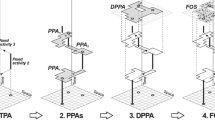Abstract.
Space-time accessibility measures have received much attention in recent years due to their sensitivity to differences in individual ability to participate in activities in space and time. Despite the conceptual attractiveness and robustness of space-time measures, only few attempts have been made to operationalize them to date. Research that seeks to improve space-time accessibility measures is still sorely needed. This study seeks to enhance space-time accessibility measures through developing a new operational method and GIS-based algorithm that better represents the space-time characteristics of urban opportunities (e.g. their geographical distribution and opening hours) and human activity-travel behavior (e.g. delay times, minimum activity participation time, and maximum travel time threshold). The proposed method not only takes into account the number and size of opportunities, but also the possible activity duration at each activity location given its opening hours and the effect of transport network topology (e.g. one-way streets, turn restrictions and over-pass). Incorporating these elements into space-time measures helps overcome several shortcomings of previous approaches to evaluating space-time accessibility.
Similar content being viewed by others
Author information
Authors and Affiliations
Additional information
Received: 15 September 2002 / Accepted: 10 February 2003
A version of this paper was presented at the 98th Annual Meeting of the Association of American Geographers, Los Angeles, March 19-23, 2002. We thank Joe Weber for providing the digital transport network with travel speeds and a version of the geocomputational algorithm he used in his study (Weber 2001), upon which our developmental effort has been based. We are also grateful to the helpful comments and suggestions of the reviewers.
Rights and permissions
About this article
Cite this article
Kim, HM., Kwan, MP. Space-time accessibility measures: A geocomputational algorithm with a focus on the feasible opportunity set and possible activity duration. J Geograph Syst 5, 71–91 (2003). https://doi.org/10.1007/s101090300104
Issue Date:
DOI: https://doi.org/10.1007/s101090300104




